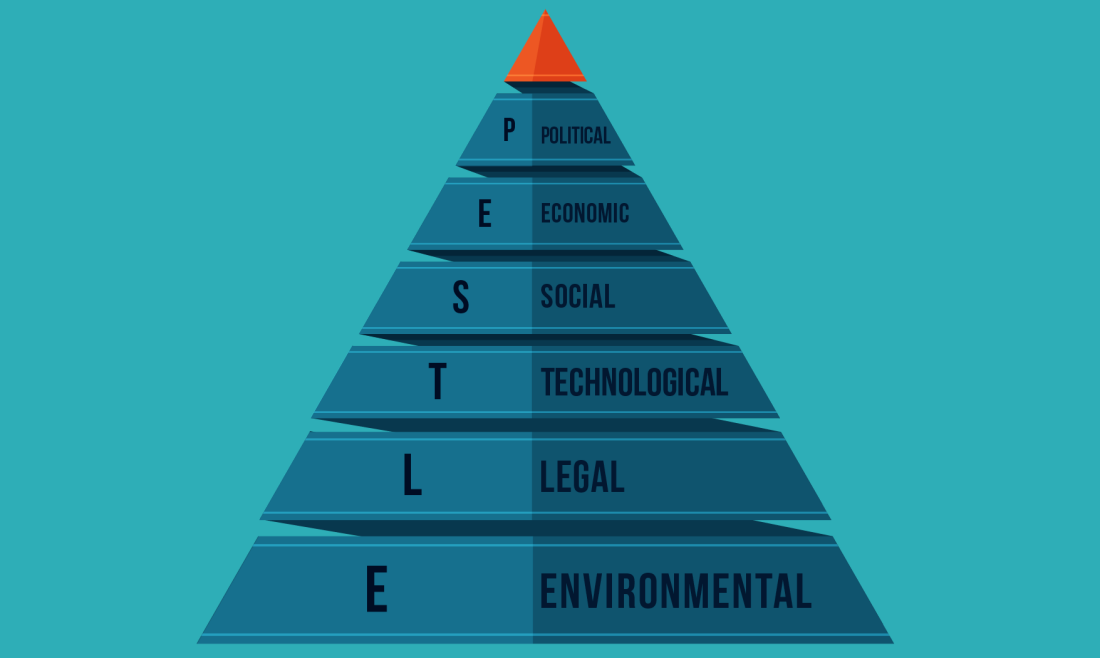Are you searching for a detailed guide to strategic analysis? Then you are at the right place. In this article, you'll find everything you need to know about strategic analysis. Keep reading.

Types of Strategic Analysis
Internal Strategic Analysis
Internal analysis, as the name implies, is carried out when a company has to assess its own internal performance, identify its strengths and weaknesses, and determine how best to use available resources to further enhance both. This will improve the company's reputation in the marketplace. By assessing the potential of the company to achieve its objectives, the internal analysis primarily focuses on the performance of the organization.
One of the most renowned methods for doing an internal strategic analysis is the SWOT analysis. There is no better approach to take use of a strategically completed analysis than to use it to identify the strengths, threats, opportunities, and weaknesses that your project may encounter.

External Strategic Analysis
The organization needs to be aware of any external variables that can limit its ability to grow after successfully completing its internal investigation. To do this, they must track how the market works and how consumers behave when using particular goods or services. A typical external analysis technique is to gauge client happiness.
One of the most popular methods for external analysis is PESTLE analysis. The PESTLE technique involves a reasonably straightforward process that one is most likely to use.
The term "PESTLE analysis" (Political, Economic, Social, Legal and Environmental) refers to a framework of macro-environmental elements utilized in the environmental scanning part of external strategic analysis. Demographic and ethical considerations have expanded the model. It provides a summary of the many macroenvironmental aspects that the firm must take into account and is a component of the external analysis while doing a strategic analysis or conducting market research.

Process of Strategic Analysis
Strategic analysis involves different processes and varies with industry. Thus, here we choose the strategic market analysis as the example to show the process.  Below are 5 steps of strategic market analysis:
Below are 5 steps of strategic market analysis:
- 1. Start by determining how in-depth your strategic analysis is. Does your analysis have a target audience at the corporate, divisional, or functional area level (such as sales or marketing)? Understanding your company's strengths, weaknesses, opportunities, and threats at every level of the organization can help you develop the most effective plan for future success.
- 2. Put together a team to help. There should be representation from the board of directors or the executive team, as well as from the departments of finance, human resources, operations, and sales, among any other important divisions. Remember that you need staff members with a range of perspectives on the business, at least some of whom can help with the identification and evaluation of internal and external data.
- 3. Use one or more analytical techniques, such as SWOT analysis or PESTLE, to conduct your analysis. Make sure that team members provide relevant quantitative and qualitative data, which may also include feedback from other audiences, such as clients or industry experts. No matter if your firm uses the balanced scorecard to manage strategy, its four perspectives can be quite helpful for guiding the conversation once everyone is there.
- 4. Finish your research and deliver your results to the group. The analysis will serve as the foundation for your approach, so you must write a report outlining your conclusions. Make a report, preferably one that is aesthetically pleasing, that highlights the findings of your inquiry and gives them some background.
- 5.Create a formal strategy using the findings as a guide. Make use of your strategic analysis to establish priorities, create goals, and create the initiatives and strategies required to help you achieve them.
How can you use your strengths and take advantage of opportunities? How may future threats and vulnerabilities be lessened? Has this study caused any new priorities to emerge? Create a strategy map that graphically illustrates your company's overarching objectives and how they relate to one another.
When done properly, this analysis is a useful tool for enhancing organizational performance and can inspire businesses to adopt more creative strategies.
A Must-have Strategic Analysis Tool - Boardmix
This online whiteboard tool, called Boardmix, will fit all purposes and teams – from marketers and salesmen to developers and designers. It is a tool that has a clean design, straightforward navigation, and a bundle of collaborative options for:
- Strategic planning/analysis
- Brainstorming/mind mapping
- Workflows building
- Organizing online meeting
- Research & design

On Boardmix, interactive meetings, presentations and exchanges can be carried out at the same time, and multiple people can interact freely online. Boardmix can not only help users easily carry out various whiteboard presentations, but also has a variety of different creative expression tools that can be used at will.
Software Features
- A cloud-based online whiteboard software, which has the characteristics of being opened and used at any time, and it is easy and convenient for starters to use.
- The functions are all free, the map has no limit on the number of nodes, and the exported pictures will not have irrelevant watermarks.
- Online collaboration can support multi-person participation, and team members can join the file for collaboration at any time they want.
- It can support the access of external audio and video platforms, and can realize real-time and efficient communication in remote office.
Strategic Analysis Examples
Example 1: Free or open source project management software (SWOT Analysis)

Example 2 : PESTEL analysis for Apple Inc.
Political Factors
- The majority of the components Apple need are produced in China, a country with accessible low-cost manufacturing. Production could be hampered by political unrest in this nation.
- The corporation is more susceptible to political and social upheaval as a result of this dependence.
- Apple might become the target of rising Chinese nationalism, which would result in a decline in its market share.
Economic Factors
- China's economic expansion and rising labor expenses could eliminate Apple's cost advantage.
- It might be more expensive for Apple to conduct business with foreign markets if the dollar strengthens.
Social Factors
- Consumers who are concerned about ethics may find Apple items less appealing due to China's manufacturing practices.
- Due to escalating human rights issues, Apple-China cooperation may alienate prospective customers in other regions of the world.
- An opposition to expensive goods and the emergence of minimalism.
Technology Factors
- Apple's exclusive operating system can restrict the options open to Apple users.
- Apple's rivals have demonstrated a remarkable ability to imitate Apple services and products, as seen in the comparison between Apple Pay and Google Pay.
Environmental Factors
- The proper disposal of discarded gadgets is Apple's largest environmental concern. The profitability of the business may be significantly impacted if they are made to cover the costs of this.
- More regulations and increased industrial costs could result from the strict pollution policies in China.
- Transport is disrupted by climate change.
- Apple is susceptible to rises in the cost of commodities and energy.
Legal Factors
- A huge number of its items, including software, books, and music, are protected by intellectual property, making Apple exposed to issues like piracy and subsequent legal action.
- The company's aspirations include entering the automotive sector, which could result in higher insurance and legal fees.









